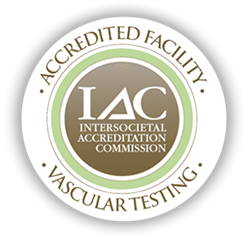Genicular Artery Embolization (GAE)
Genicular artery embolization is a safe, effective and minimally-invasive procedure to reduce knee pain for patients with osteoarthritis.
While the procedure does not cure osteoarthritis, genicular artery embolization procedures help patients improve their quality of life, reduce the use of opioids and other pain-killers, and avoid pain management injections or physical therapy.
Osteoarthritis Knee Pain
Most people are familiar with arthritis, but don’t have a complete understanding of the condition. Arthritis is a way of describing many conditions involving inflammation that causes joint pain.
Osteoarthritis is the most common form of arthritis and is caused by the cartilage of the joint being worn down over time or trauma. It is most common in the knees, hips, hands, and spine. It cannot be reversed. However, there are some treatments available to help improve joint function or reduce pain.
Over 32 million adults in the US have osteoarthritis, also known as degenerative joint disease. The risk of developing osteoarthritis increases with overuse of the joint, injury to the joint, age, and obesity. Women are more likely to develop osteoarthritis and genetics can indicate increased risk for osteoarthritis.
Signs and Symptoms of GAE:
- Osteoarthritis (OA) of the knee
- Degenerative Joint Disease (DJD)
- Pain in one or both knees
- Pain in your knees when walking up stairs
- Stiffness in your knees when you wake up
- Persistent usage-related knee pain
- Failed or diminishing relief from conservative treatment – i.e. Physical therapy, joint injections

How Does It Work?
The procedure only uses moderate sedation that allows patients to go home the same day. Under image-guidance the physician places a thin, hollow tube called a catheter into the patient’s artery in their upper thigh.
Using X-rays, the catheter is guided down to the arteries that supply blood to the tissue that lines the knee. Once it is in position, the physician injects small micro sphere particles that slow the blood supply to the capillaries in the knee joint tissue.
As a result of the procedure, patients can expect to experience a reduction in pain and other functional symptoms of osteoarthritis.


